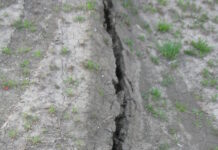Photo credit: DiasporaEngager (www.DiasporaEngager.com).
What are the lessons for IDF force build-up following the Hamas attack on October 7 and the Iron Swords War? A recent article by Prof. Azar Gat concludes that “there is no need to increase the scope of the forces and the existing force build-up should be continued, the main [element] of which is investments in technologies that are the key to the advantage of the IDF on the battlefield and for the current achievements.”
We do not agree with this conclusion, and believe it to have negative strategic consequences. The continuing inability of the IDF to realize the goals of the current war is mainly the result of a lack of ready and available maneuvering units, a lack that military technology cannot compensate for no matter how good it is. If the IDF is to be able to fulfill its responsibilities, it needs more well-trained maneuver divisions to resurrect the territorial defense organization as well as maintain technological superiority.
More than half a year after October 7, the Iron Swords War is still going on. Before after-action investigations have been completed, experts have already begun to draw conclusions about key strategic aspects of the war.
One central aspect concerns the future force build-up of the ground forces. Should the number of divisions and brigades be increased? What level of readiness and competence must they have? How does the concept of territorial defense fit into the army? What is the right balance between investment in advanced technologies and the size of combat forces available at any given time?
In his recent article, Prof. Gat warns against drawing incorrect conclusions from the October 2023 failure. He notes that “Since Hamas’s attack and the outbreak of the war in the Gaza Strip, the public discourse has been impressed by the view … that the IDF is too small given the threats; that reliance on technology has led to dangerous neglect and reduction of the ground forces; that the air force is disproportionately funded at the expense of the ground forces; and that there is a need to increase the defense budget significantly and permanently, beyond covering the expenses of the war.”
In his view, “These claims are misleading and even damaging, both militarily and economically.” Gat also claims that the forces that were in the Gaza Strip sector on the morning of October 7, which included about 400 fighters and 12 Merkava 4 tanks, could have, had they been in position, thwarted the Hamas attack. Combat helicopters and helicopters on standby, combined with the forces of the standby units, would have completed the defeat of Hamas, according to Gat.
Gat’s bottom line claim is that there is no need to increase the scope of the maneuvering forces. It is necessary, he says, to invest more in resurrecting the territorial defense organization and continue building the existing force, the main elements of which are investments in technology that are the key to the IDF’s advantage on the battlefield and to the current achievements.
While we take issue with his overall conclusion, Gat is right in two key matters. First, territorial defense forces must be rebuilt so they can provide an immediate response to an all-out attack or targeted raid on a civilian settlement until the arrival of military forces. Many plausible scenarios, including a ground attack on several fronts or several sectors on the same front by many invading forces, would keep the military forces too busy to rapidly reinforce every civilian settlement in the areas being attacked even if the army is ready, and this is even more true if the enemy achieves surprise. Properly equipped and trained forces organized on a local basis in each settlement would be able to provide a reasonable response to a wide range of scenarios of this type until the army is able to provide forces to support them.
Secondly, Gat is absolutely right that a proper balance must be maintained between defense spending and the state’s ability to continue to maintain a growing and developing economy, for both civilian and military reasons. Maintaining a large well-equipped and well-trained army requires a well-balanced and strong economy. An overstretching of resources to defense could lead to an economic collapse.
One of the lessons learned by the IDF and the Israeli governments from the Yom Kippur War was that if the regular army had been larger, the enemy’s initial achievements would have been radically diminished. Furthermore, Israel’s ability to conduct a protracted war required an increase in reserve forces and larger stocks of ammunition, spare parts and other essential commodities. However, the extent of the increase in Israel’s military, which was 2-2x the 1973 figures, was too large to be financed by the Israeli economy. This was one of the reasons for the collapse of the Israeli economy in the first half of the 1980s.
Our dispute with Gat is about the optimal balance point. Gat claims that the current war proves that the size of the IDF’s ground force is sufficient, and that there is therefore no need to increase it. We believe, to the contrary, that the war proved and continues to prove that the size of the existing force is insufficient. Had it been larger, we would be in a better operational situation today, which would also have had a positive effect on Israel’s political situation.
Even discounting the effect of the surprise on the outcome of October 7, 400 soldiers and 12 tanks are not sufficient to hold a front that is about 60 kilometers wide. So the question arises: Why was this the size of the force that was left on that front? The answer is that over the past two years, many forces have been diverted to fight in Judea and Samaria (Operation Breakwater) due to a sharp jump in the frequency of attacks there and the need for a significant increase in forces to address the increase and reduce it.
We further ask: How many soldiers, tanks and other military equipment were deployed on the other borders of the State of Israel on October 7? Was the situation on the Lebanese border better than on the Gaza border? The answer is no. There too, the size of the force deployed across the front was tiny compared to what was required. That being the case, what would have happened if, on that day, not only Hamas had attacked Israel but Hezbollah as well? And what about the Golan Heights? After all, Hezbollah does not stand alone. Iran and its other proxies stand behind it.
Part of the solution is the regular recruitment of more reserve units, but this will not suffice — due, among other things, to cuts in reserve units that have concentrated reserve days among a relatively small group of people.
Responding to the events of October 7 as they occurred, or as they could have occurred in a much more severe manner (i.e., on several fronts at the same time), is not the end of the discussion. After mobilizing all possible ground forces of the IDF, Israel was facing war on only two fronts, and it immediately became clear that it lacked ground forces.
As long as the threat of a major Hezbollah offensive remained relevant, it was not clear whether the fighting in the north would remain at the level of low-intensity attrition or escalate to high-intensity fighting. The IDF was thus unable to concentrate enough forces to properly attack Gaza. Instead of attacking the Gaza Strip simultaneously in all, or at least most, of its sectors, the IDF was forced to carry out a sequential attack, an act that took a lot of time and had negative strategic and political ramifications.
Today, after more than six months of fighting against an enemy substantially weaker than the IDF, the IDF’s achievements are good, but not enough. The task of destroying Hamas and the organizations that help it remains uncompleted. Meanwhile, most of the reservists had to be discharged to ease the pressure on both their personal livelihoods and the national economy, so the size of the active fighting force has been greatly reduced. A larger ground force on October 7 would have made it possible to ensure a solid front against Hezbollah, including the possibility of a simultaneous all-out multi-sector attack across the entire Gaza Strip.
There are of course other considerations that prevented Israel from attacking the entire Gaza Strip at once (among them the need to leave quiet areas into which the population could be moved), and there are further reasons why the war was prolonged and taken from high-intensity warfare to the low-intensity warfare that is taking place now. However, the lack of sufficient ground forces was the main inhibiting factor. Had the IDF begun the war with more ground forces, the scale of the achievement by the time it became necessary to release the reserve forces, after about four months of mobilization, would have been greater and would have reduced the time needed to conduct the low-intensity combat phase in which we are now engaged.
Furthermore, the first offensive phase could have been conducted with larger forces that could have operated in several sectors at the same time. Had more units been available, the IDF could have sequenced their mobilization in turns in order to maintain a higher intensity of action over a longer period of time while conducting the multi-sector offensive.
Dr. Eado Hecht is a researcher at the Begin-Sadat Center for Strategic Studies and a lecturer in the master’s degree program in Security Studies at Bar-Ilan University. Prof. Eitan Shamir is Director of the Begin-Sadat Center for Strategic Studies. A version of this article was originally published by The BESA Center.
Source of original article: Eado Hecht and Eitan Shamir / Opinion – Algemeiner.com (www.algemeiner.com).
The content of this article does not necessarily reflect the views or opinion of Global Diaspora News (www.GlobalDiasporaNews.com).
To submit your press release: (https://www.GlobalDiasporaNews.com/pr).
To advertise on Global Diaspora News: (www.GlobalDiasporaNews.com/ads).
Sign up to Global Diaspora News newsletter (https://www.GlobalDiasporaNews.com/newsletter/) to start receiving updates and opportunities directly in your email inbox for free.





























